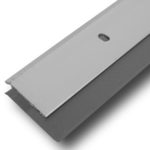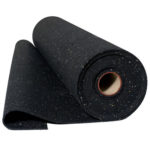
Soundproofing is an excellent way to make a living space more comfortable by limiting the amount of noise that enters or escapes a space, but who is responsible for soundproofing rental properties? Are landlords responsible for noisy neighbors? As it turns out, the answer depends on the situation.
Soundproofing isn’t a requirement in any building codes, meaning landlords are not required to soundproof their properties. But they can still benefit from investing in their properties to create a tranquil, livable environment. Implement some noise reduction tactics in your rental property to:
- Reduce energy bills: Soundproofing materials absorb energy, including heat. By limiting the amount of noise that escapes an apartment, you’ll also limit the amount of heat that escapes, allowing tenants to make the most of their energy consumption.
- Increase tenant comfort: Soundproofing reduces the effects of impact and airborne noise coming from neighbors, allowing tenants to work, study or sleep in peace without distractions from next door.
- Prevent noise complaints: Because soundproofing confines noise to a space, tenants will enjoy the freedom to make a little extra noise without bothering their neighbors or breaking city ordinances. Fewer complaints mean less hassle for landlords.
- Fill openings faster: While soundproofing won’t directly raise your property’s value or the amount you can charge per month, it does make an excellent selling point for any potential tenant. Musicians and other creatives in particular will be ecstatic to learn your building is soundproofed, and any tenant can see the benefits of increased privacy.
Affordable Soundproofing Options for Landlords
There are plenty of affordable soundproofing materials that landlords can install to improve living conditions without breaking the bank:
- Door seals: Place door sweeps or seals underneath a door to prevent the amount of sound that escapes underneath or through by vibrations. Soundproof Cow’s Quiet Door™ Door Sweeps are affordable and easy to install with household tools.
- Soundproofing insulation: Quiet Batt™ Soundproofing Insulation and similar materials slide into ceiling panels or between wall studs to absorb sound and trap heat.
- Flooring underlayments: If you’re redoing your building’s floors, install flooring underlayment beneath floorboards to reduce the impact of noise from footsteps, dropped objects and other impacts.
Easy Soundproofing Solutions for Tenants
Landlords aren’t required to soundproof their buildings, but residents can still improve their situation on a budget. If you’re a tenant living in a noisy building, here are a few effective soundproofing materials you may already have available:
- Furniture: Large, fluffy couches, recliners or pillows can soak up a lot of noise. Place furniture against shared walls to block noise from the other side.
- Blankets, tapestries and drapery: Hanging extra blankets, curtains or other cloth from your walls and ceilings is an easy way to absorb noise on a budget. Remember — the thicker the better!
- Carpets and rugs: Lining your floors with thick carpets or rugs will prevent noise from reflecting off the ground or transferring from below. As another creative application, try hanging decorative rugs from your walls as a sound-absorbing barrier.
Contact Soundproof Cow
At Soundproof Cow, we offer great deals on the best soundproofing materials. For more information or a free acoustic analysis, contact Soundproof Cow today!










